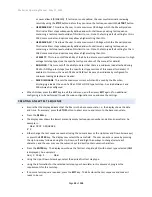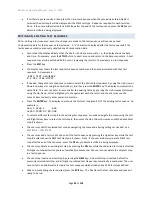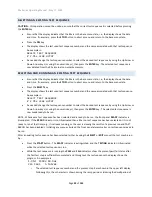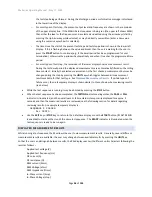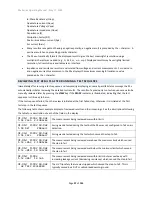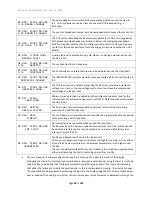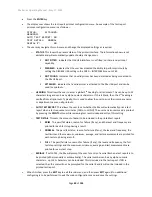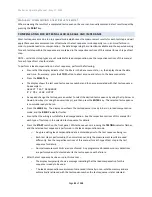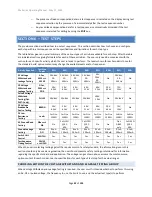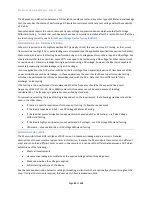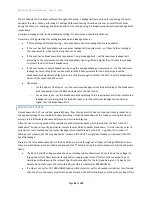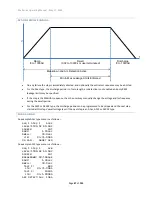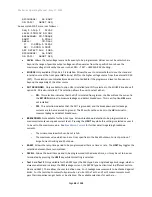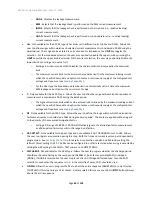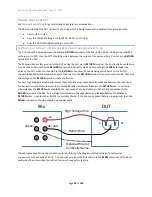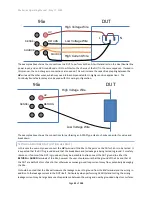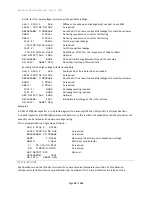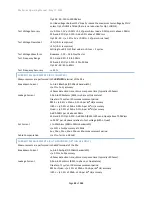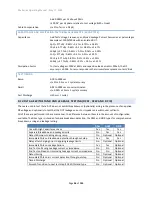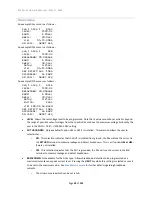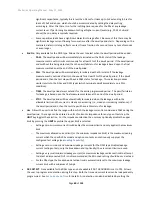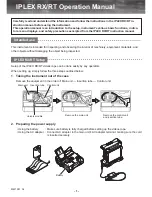
95x Series Operating Manual - May 17, 2022
Page
45
of
155
exceeds nominally 7.5mApk. Typically, this is detected within 30usec and shuts down the test within
1msec (this is indicated as HV TRIP). This can be disabled in the CNFG-TEST menu.
•
The 95x continuously monitors the instantaneous DUT current and shuts down the voltage if this exceeds
the user set breakdown peak current limit for that step. Typically, this is detected within 30usec and
shuts down the test within 3msec (this is indicated as BREAKDOWN).
•
The 95x monitors the RMS current for each cycle (for AC type steps) and the DC current for periods of
nominally 5msec (for DC type steps). If this is above the loading capability of the 95x voltage source (for
this limit see Loading Capability in the relevant Specifications section for the test type being run) then this
shuts down the voltage (this is indicated as OVERCURRENT).
LEAKAGE CURRENT
This is not applicable when pulse testing.
The leakage current of a DUT is a steady flow of current caused by leakage in the DUT, generally either
intentionally by circuitry or unintentionally by inter-wiring leakage capacitance and resistances. Unlike breakdown
current, leakage current is generally fairly linear vs. the applied voltage (i.e., doubling the voltage produces
nominally twice the leakage current) but not necessarily so.
For DC there is only a single component of leakage current (the DC leakage current), whereas for AC there are two
components
–
•
In-phase leakage is the component of the leakage current which is in phase with the applied voltage and is
caused by the resistance of the DUT.
•
Quadrature leakage is the component of the leakage current which is at 90° to the applied voltage and is
caused by the reactance of the DUT (typically capacitance).
The total RMS AC current is the scalar formed by combining the in-phase and quadrature vector currents. In-phase
and quadrature currents can be of either polarity, which is ignored when comparing against the user set limits.
The 95x measures the RMS AC current (in-phase, quadrature, and total RMS values) for every cycle of the applied
voltage, or the mean DC current for every nominally 7.25ms (100ms for dwell times greater than 2 seconds).
These values are compared against the user set maximum and minimum limits for leakage current. If enabled and
the leakage current is outside the limits during the dwell period of the test, then the DUT is failed. The 95x also
offers a special variation of AC Voltage Withstand testing for testing the capacitance (and optionally Dissipation
Factor) of a DUT
–
this uses the in-phase and quadrature measurements to internally compute the more advanced
capacitance and DF results required for certain testing applications.
For the ACez and DCez types the 95x uses the user set maximum leakage limit as the breakdown limit. For all other
types, the 95x allows the user to independently set both breakdown and leakage limits. In all cases, setting a
minimum leakage limit of zero disables the minimum leakage limit.
ARC CURRENT AND TIME
Arcing is similar to breakdown but rapidly
“self
-
extinguishes”
without requiring a reduction in the applied voltage
(but typically rapidly re-occurs repeatedly). There are many ways in which arcing can occur and a thorough
description of arcing is beyond the scope of this document. Generally, arc currents are AC currents in the
frequency range of 1 to 2MHz and are fairly high amplitude (often tens of milliamps or more) and have no
relationship to either breakdown or leakage currents. Generally arcing can only occur at higher voltages (>300V)
and only in a gas or (in rare circumstances) across a surface.



